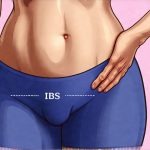Pelvic inflammation is a complex issue impacting millions globally, often manifesting as chronic pelvic pain, endometriosis, irritable bowel syndrome (IBS), or other related conditions. Traditional treatments frequently involve pharmaceutical interventions aimed at managing symptoms, but growing interest surrounds alternative and complementary approaches like dietary modifications and fasting protocols. Understanding the potential interplay between these methods and inflammatory processes within the pelvis is crucial for those seeking holistic health strategies. This article will explore current knowledge regarding fasting and its possible connection to reducing pelvic inflammation, acknowledging the nuances of this emerging field.
The body’s innate healing capabilities are often supported by lifestyle adjustments. While not a replacement for conventional medical care, incorporating strategies that promote cellular repair and reduce systemic inflammation may offer additional support for managing chronic conditions. Fasting, in various forms, has been practiced across cultures for centuries, historically linked to spiritual practices but increasingly studied for its physiological effects related to inflammation and overall health. This exploration will focus on how fasting might influence inflammatory pathways relevant to pelvic health, offering a balanced perspective based on available research.
Understanding Pelvic Inflammation
Pelvic inflammation isn’t a single disease; it’s often a feature of several conditions. Chronic inflammation within the pelvic region can be triggered by various factors including immune responses, hormonal imbalances, gut dysbiosis, and even past infections. The resulting inflammatory cascade involves the release of cytokines, signaling molecules that contribute to pain, tissue damage, and functional impairment. Identifying the root cause is paramount for effective management, but addressing systemic inflammation alongside targeted treatments may yield improved outcomes for many individuals experiencing pelvic discomfort.
Pelvic health is intricately linked with gut health. A compromised gut microbiome can lead to increased intestinal permeability (“leaky gut”), allowing inflammatory molecules to enter the bloodstream and potentially exacerbate inflammation elsewhere in the body, including the pelvic region. Therefore, interventions that support gut health – which some fasting protocols may indirectly influence – are often considered beneficial adjunctive strategies for managing chronic pelvic conditions.
How Fasting May Impact Inflammation
Fasting isn’t simply about abstaining from food; it’s a metabolic shift. When the body is deprived of constant caloric intake, it transitions from utilizing glucose as its primary energy source to burning stored fat through processes like ketogenesis. This shift can have significant implications for inflammation. Research suggests that ketone bodies themselves may possess anti-inflammatory properties and can influence immune cell function, potentially reducing pro-inflammatory cytokine production. However, the degree to which these effects translate specifically to pelvic inflammation requires further investigation.
Intermittent fasting (IF), a popular variation involving cycles of eating and voluntary fasting, has demonstrated potential in modulating inflammatory markers in several studies. Time-restricted eating, where food consumption is limited to a specific window each day, also falls under this umbrella. These protocols can reduce oxidative stress, enhance cellular repair through autophagy (a process where cells clear out damaged components), and potentially improve insulin sensitivity – all factors that contribute to lowering overall inflammation within the body. It’s important to note that individual responses vary considerably based on genetics, lifestyle, and pre-existing health conditions.
Fasting Protocols & Considerations for Pelvic Health
Various fasting protocols exist, ranging from prolonged water fasts (typically medically supervised) to more accessible methods like 16/8 intermittent fasting (eating within an eight-hour window each day). Time-restricted eating is another popular approach that can be easily incorporated into daily routines. The ideal protocol depends on individual health status and goals. For individuals with pre-existing medical conditions, including those related to pelvic health, consulting a healthcare professional before initiating any fasting regimen is crucial.
Certain protocols may be more suitable than others for supporting pelvic health. For example, prolonged water fasts are generally not recommended without close medical supervision due to potential risks and nutritional deficiencies. Intermittent fasting or time-restricted eating might be more manageable options for some, but even these should be approached cautiously. It’s also important to consider the refeeding process – gradually reintroducing food after a period of fasting is essential to avoid exacerbating inflammation or digestive distress. A focus on nutrient-dense foods during the feeding window can further support healing and minimize inflammatory triggers.
Gut Health & Fasting’s Indirect Influence
As previously mentioned, gut health plays a vital role in pelvic inflammation. While fasting itself isn’t directly aimed at improving gut flora, certain protocols may indirectly influence the microbiome. Reduced carbohydrate intake during fasting can potentially decrease populations of bacteria that thrive on sugar, creating an environment more favorable for beneficial microbes. However, drastic dietary changes associated with fasting can also disrupt the gut ecosystem if not managed carefully.
Supporting gut health alongside a fasting protocol is paramount. This involves incorporating prebiotic-rich foods (which feed beneficial bacteria) during feeding windows and considering probiotic supplementation under the guidance of a healthcare professional. A personalized approach that considers individual gut microbiome composition is ideal, as the optimal dietary strategies vary from person to person. Reintroducing fiber gradually after a fast can also help restore gut motility and support microbial diversity.
It’s essential to remember that fasting isn’t a one-size-fits-all solution. While research suggests potential benefits for reducing inflammation, its impact on pelvic health is still being investigated. Individuals experiencing chronic pelvic pain or related conditions should prioritize working with a qualified healthcare team – including doctors, registered dietitians, and potentially functional medicine practitioners – to develop a comprehensive management plan that addresses their specific needs. This plan may incorporate dietary modifications like fasting protocols as an adjunctive strategy alongside conventional treatments, but it should always be tailored to the individual’s health status and carefully monitored for effectiveness and safety. A holistic approach focusing on lifestyle factors, stress management, and personalized nutrition is often the most effective path toward long-term well-being in managing pelvic inflammation.





















